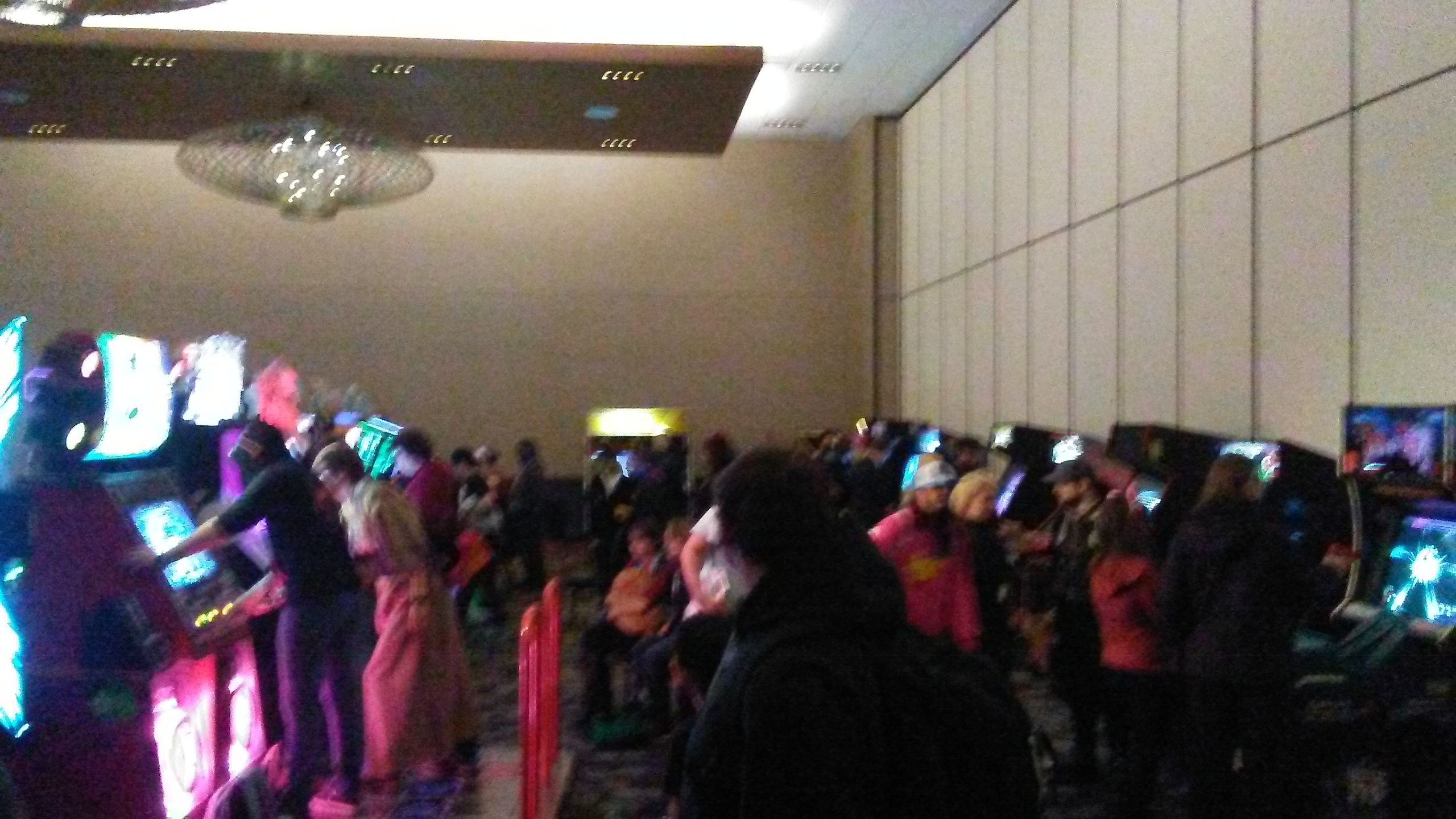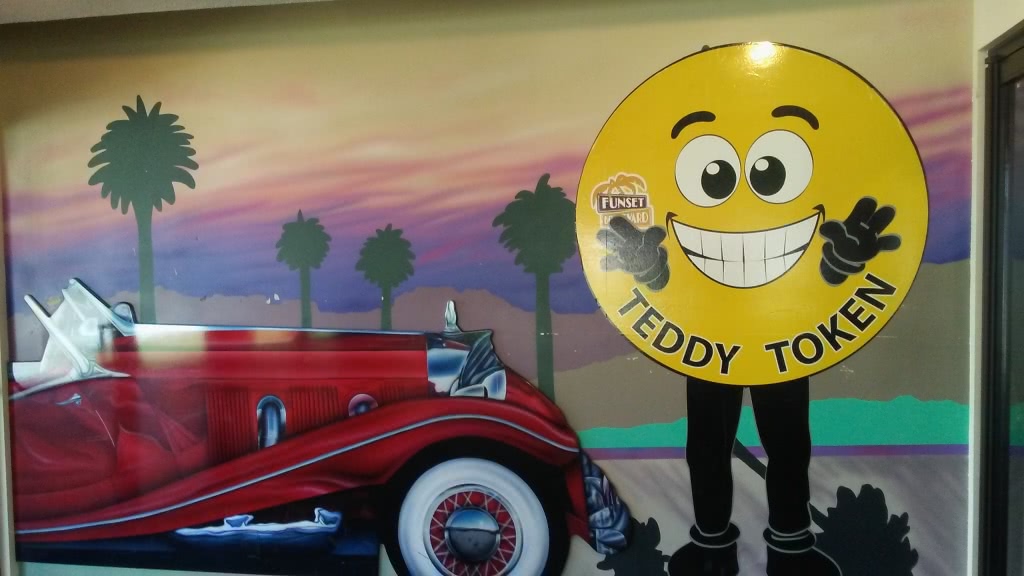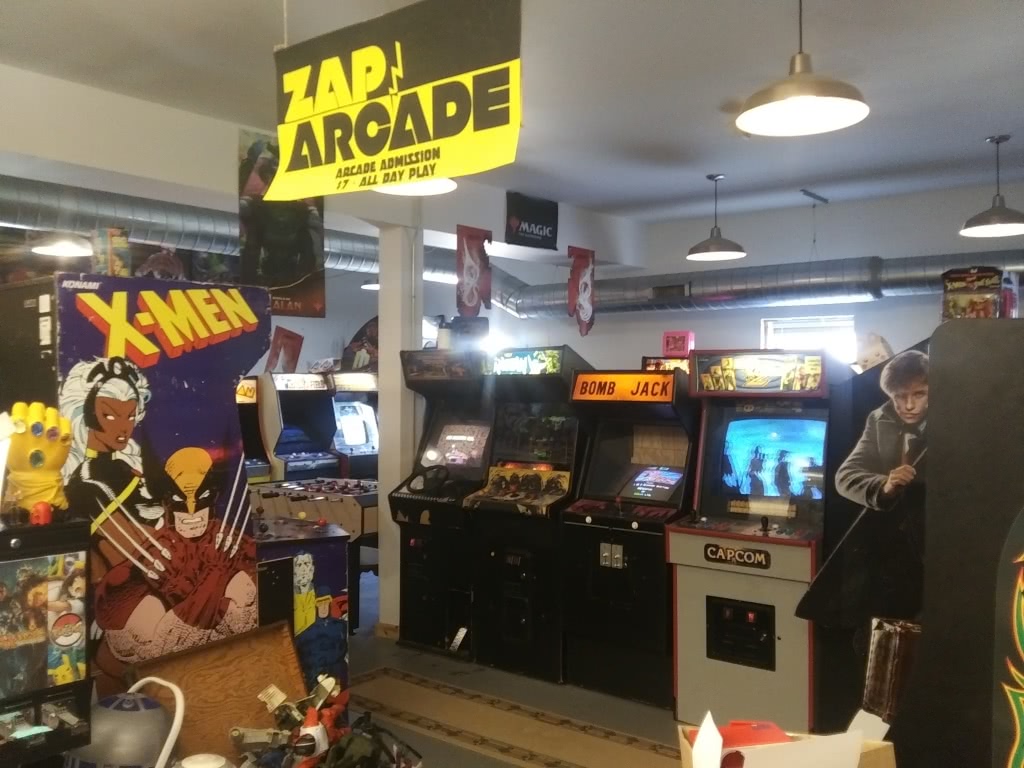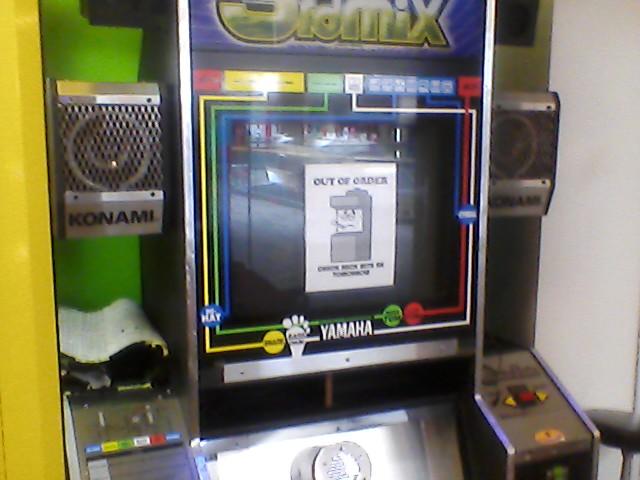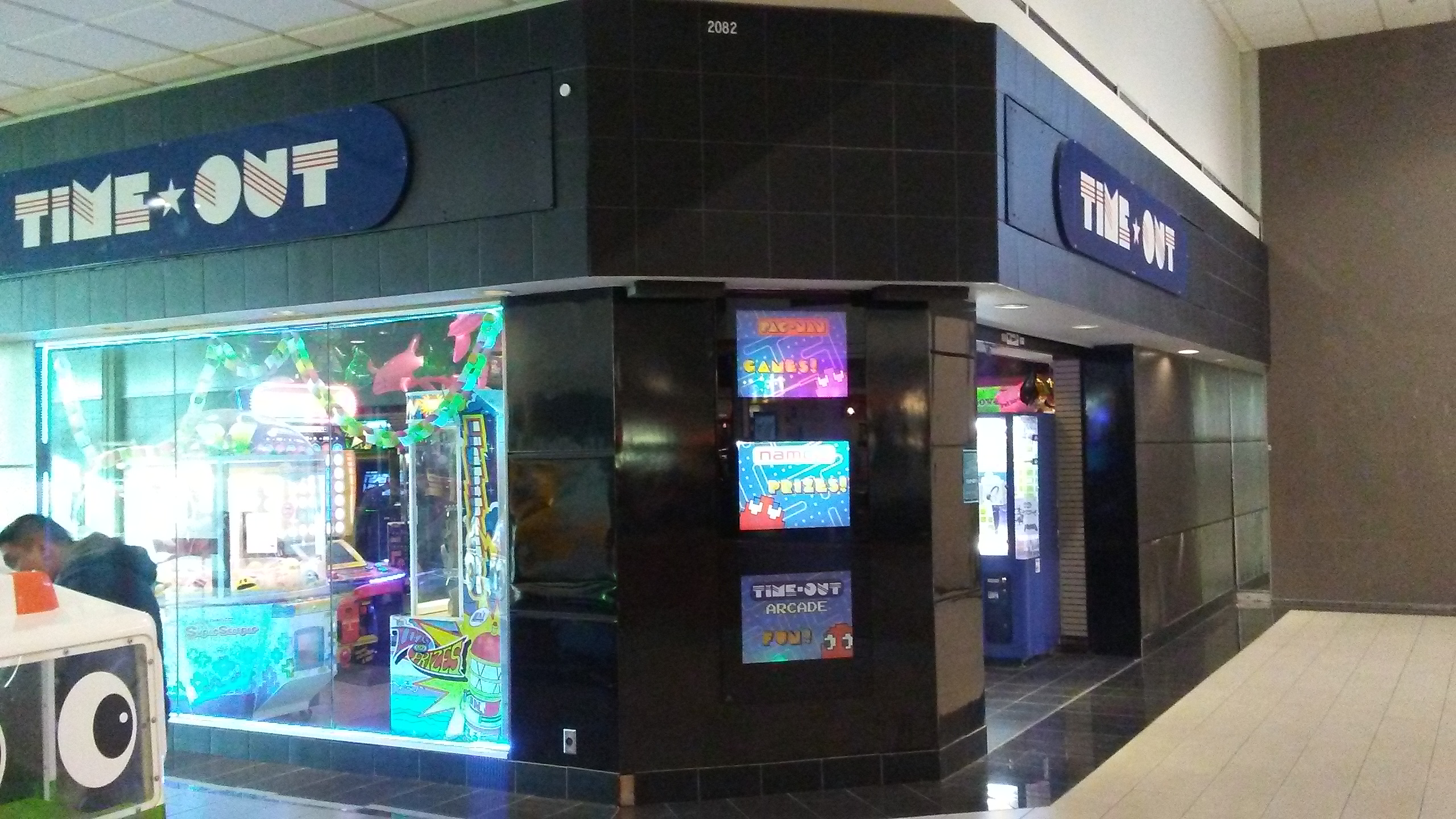It’s been a while since I’ve written anything here. I didn’t run out of arcades, nor did I finish writing about my trip to the East Coast. I had a disappointing arcade trip last November that killed my motivation. Maybe I’ll still write about it someday, but now isn’t the time. I have another convention game room to write about. This one was so spectacular that it would be a disgrace not to.

We have a lot of cons here in the Twin Cities, but Anime Detour is the big one. It’s one of the biggest anime conventions in the midwest, second only to the behemoth that is Chicago’s Anime Central. Animinneapolis is spread over two floors of this same convention center. Detour, on the other hand, is massive enough to encompass four whole floors. It’s a bit big for my taste, but the game room makes up for it.
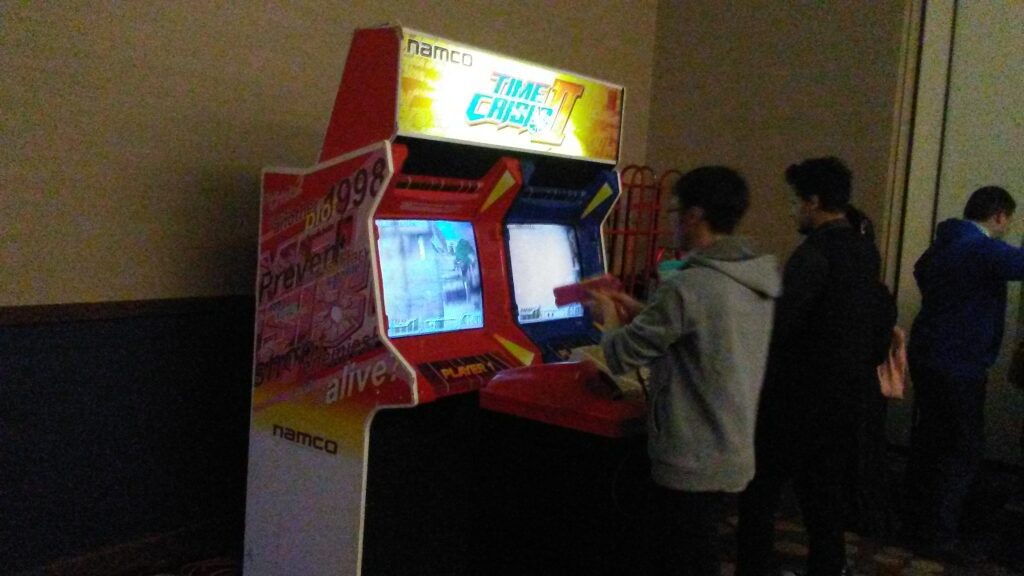
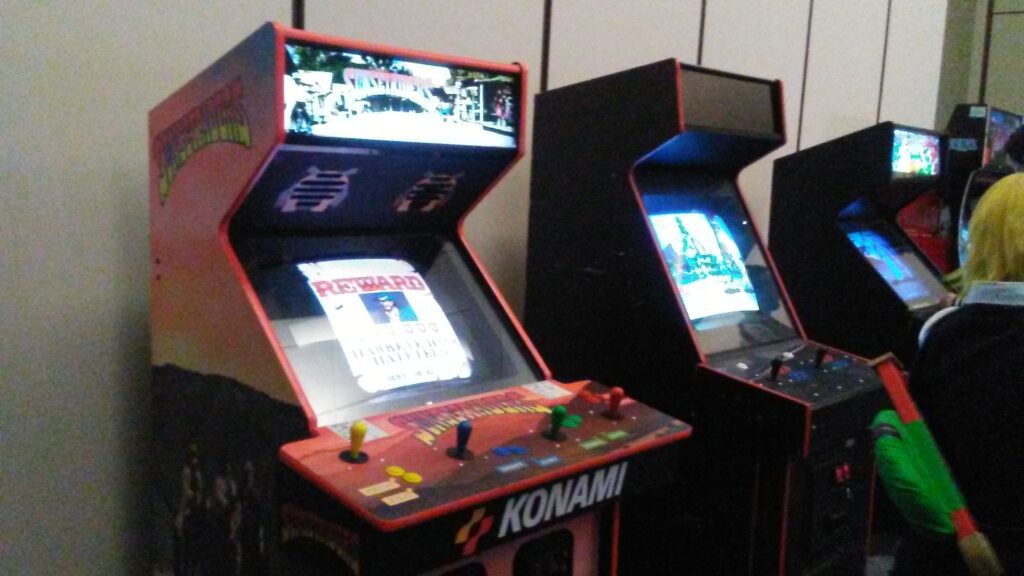
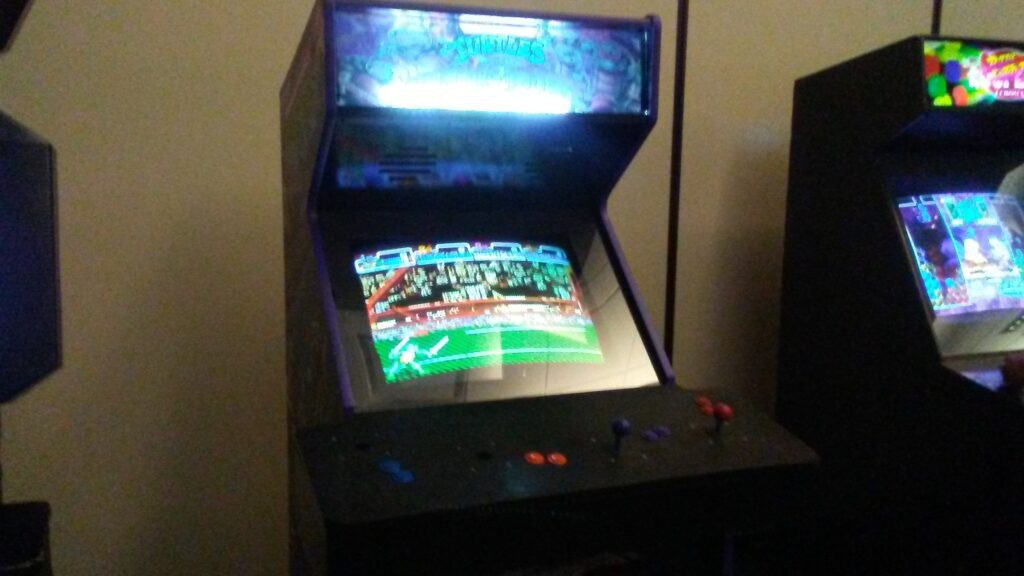

Mixed in with the imports were a handful of western releases. They felt pretty out of place, but I suppose it can’t be called an arcade without House of the Dead and Time Crisis. Either way, let’s get them out of the way first.

I finally got a chance to play X-men arcade with six players while I was here. You have no idea how much fun it is when you’re playing with a bunch of drunk black guys imitating Colossus’ special attack scream every time he uses it.

Next up is a game you’ll probably never see anywhere else: Ninja Baseball Bat Man. This game is best known for its ridiculous title and for flopping horribly in North America. A total of 43 copies of this machine were sold in the US. In 1993, arcades were already over-saturated with belt-scrolling beat-em-ups and didn’t need another. It wasn’t until a decade later that this game gained a cult following thanks to arcade emulation. EDIT: In retrospect, I think the “43 copies” number might be sensationalized.
In this game, you take control of a Power Rangers-esque team of baseball-themed superheroes. Imagine if the Ninja Turtles were comprised of baseball-playing Mega Man robots. It’s something like that. Together, they must fight through armies of weird-ass enemies using only baseball-themed weapons like bats, balls, and home plate ninja stars. What makes this game stand out is how damn cartoony it is. It’s full of slapstick, visual gags, and beautifully animated sprites. My favorite was the trumpet line that pops out of the ground long enough to play the bosses’ opening fanfare before ducking back away. The controls are also far less sluggish than in these games. While I didn’t get to play it long enough to learn the complexities of the combat system, I’ve read that there are a staggering number of moves you execute through different control inputs.
Really. This game is one of the best arcade beat-em-ups I’ve ever played. This game bombing like it did was nothing short of a tragedy.

This is Megaman the Power Battle, one of Capcom’s only attempts at a Megaman arcade game. Many people mistake this for some fighting game because of the title, but it’s just a two-player Megaman boss rush.
I kind of thought I’d have more to say about it.

Virtual-On is one of the most unique 3D fighting games I’ve ever played. The camera follows behind the back of your giant robot as you clumsily try to navigate it around using two joysticks. Once you get a feel for the controls, this one has a lot of strategy. The two-control setup allows you to quickly boost in almost any direction at the drop of a hat, so fights often come down to feinting your opponent by suddenly changing the direction you’re approaching from. A Saturn port of this game does exist, but it’s not the same without the arcade’s unique control scheme.
If you’re ever the nearby University of Iowa, they have this game in the student lounge. I found it while hitchhiking a few years back. EDIT: Of course it’s not still there!

Now with those aside, let’s get to the good stuff. Here we have Dance Dance Revolution Ace, the most recent game in the series. This is probably the closest we’ll ever get to having the game in Minneapolis. Sadly, this convention draws a lot of people from Chicago, so the machine is almost always filled with hardcore players who live within driving distance from one. We can’t compete when the most recent game we have is over a decade old.

Back to back with it is Pump It Up Prime 2, also the most recent entry in its respective series. Unlike DDR, this game was camped almost entirely by locals. I’ll never understand why the Twin Cities are so fixated with Pump It Up.

I haven’t gotten around to writing about it yet, but I encountered a good chunk of these games on the East Coast. Museca here, for example, I ran into two or three times. I played it once or twice before moving on to something else. This was one of the least popular games at the convention, so I got a lot more play out of here. I misjudged this game. It’s fun as hell.
For this one, you have five large buttons and a foot pedal. What sets it apart is that the game demands you either hit or spin the buttons, depending on the icon that comes up. The more I played it, the more I realized how intuitive this game was. It gets a pass from me.

Groove Coaster, however, is every bit as awful as I first judged it to be. It’s a game with a straightforward control scheme whose difficulty comes entirely from how screwy the interface is. For example, a section can be as simple as moving the sticks back and forth twice, but the camera flies around in such a marvelous way that you could easily be caught off-guard. It’s a game only meant to impress onlookers who don’t realize how simple it is when you get used to the visuals.

I didn’t know what this game was at first. I had to Google the name while waiting in line. Once I got a result for the title, I immediately realized what it was: Future TomTom, the black sheep of the Bemani franchise. Any mention of this game in some circles will immediately be followed by “lol.” It’s one of the most short-lived Bemani series ever, only having a single entry before being discontinued. You can’t even play this game in Japanese arcades anymore since they shut down its service after a year and a half. If you want to play it, you’ll have to find one in the hands of a collector who hacked it to play offline.
This game is exactly what it looks like. Think Taiko, but with four drums that only have one sensor each. The game’s main gimmick is that it has a camera on the front that can read the players’ movements, so it sometimes asks you to strike a pose between notes. I’m not going to lie; this game is fun as hell. I ended up with a massive blister on my hand from overplaying this. I have no idea what it did to get such a poor reputation.

Before going any further, I should probably explain where these machines came from. A few years back, some collectors got together and started a rental service for imported arcade games called Tokyo Attack. Any convention with the Tokyo Attack machines is a high-end one for sure. They have a vast selection of imported games and nearly any Japanese rhythm game you can imagine.
None of these machines came from Tokyo Attack.
This is another group using the same business model called Snow Phoenix. Their selection isn’t quite as good, but they’re significantly cheaper because they don’t have the name recognition. Aside from this Dance Maniax machine, all of the imported gamesare theirs. The rest come from a collector who lives in Wisconsin somewhere and brings his stuff to local cons. He’s the same one who supplied the machines at the last con I wrote about.
There’s also a third guy, but he’s notorious for his machines being in a poor state of repair. Nearly all of them have broken down to the point where they can’t make the con circuit anymore. Once in a while, the Pop’n machine turns up, but the screen is so broken it’s almost unplayable. He’s the same one who owns the free DDR machine at Southdale Mall that I wrote about forever ago.
Or, this is my understanding. I’m not 100% certain.

Initial D 8. The line was so long that I didn’t get to play it all the whole con. I’ll talk about it at some point when I getto my next East Coast post.
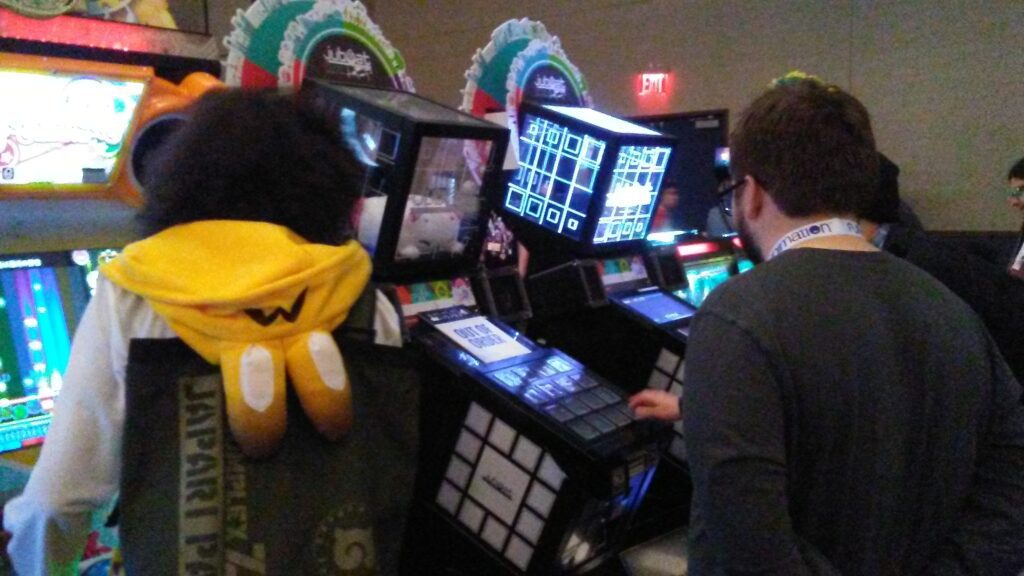
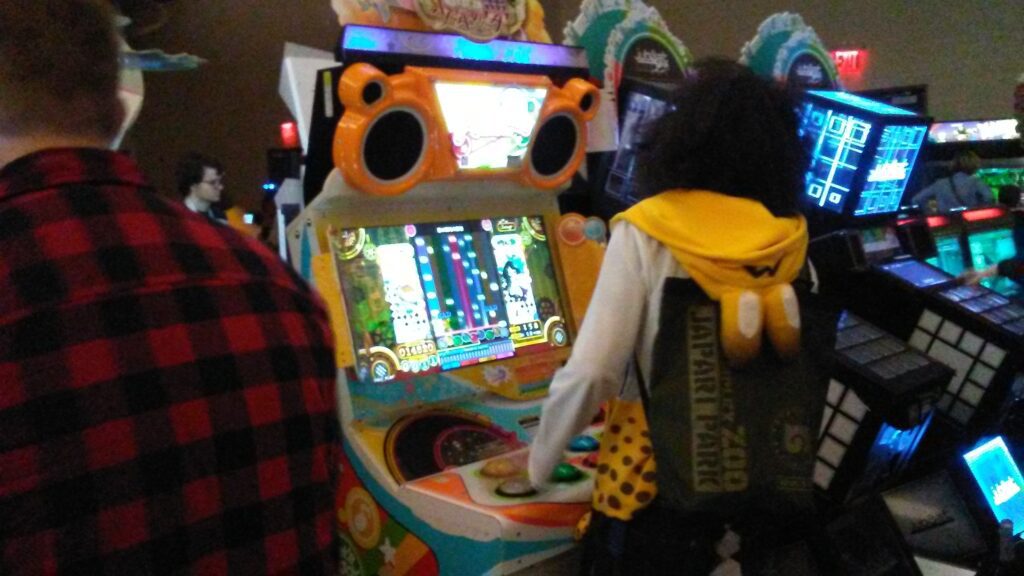
Oh yeah, they had Jubeat and Pop’n. I’ve talked about both of these and don’t have anything new to say about them.

This game is called Beat Stream, which is like Re-Rave meets MaiMai. Things pop up on the bottom screen, and you touch them when prompted. I mixed this up with a similar game called CROSSxBEATS, which I ran into last summer. All of these Osu clones blur together for me at this point. I honestly couldn’t tell you whether I’ve seen Beat Stream before.

This game is called Sound Voltex. It’s like Beatmania, except there are two knobs instead of a turntable, the note stream spins around sometimes, and a lot of the music sounds like distorted garbage. I’ve never understood why this is the most successful modern Bemani title.

Before closing out the blog post, I wanted to mention I got to try VR for the first time. It’s hard to imagine that we’ve reached the point where we can do convincing virtual reality. It seemed like a dream 20 years ago. VR parlors are already starting to pop. We’ve even got two of them here in town. I wonder if that’s going to be the future of arcades. Nah.

